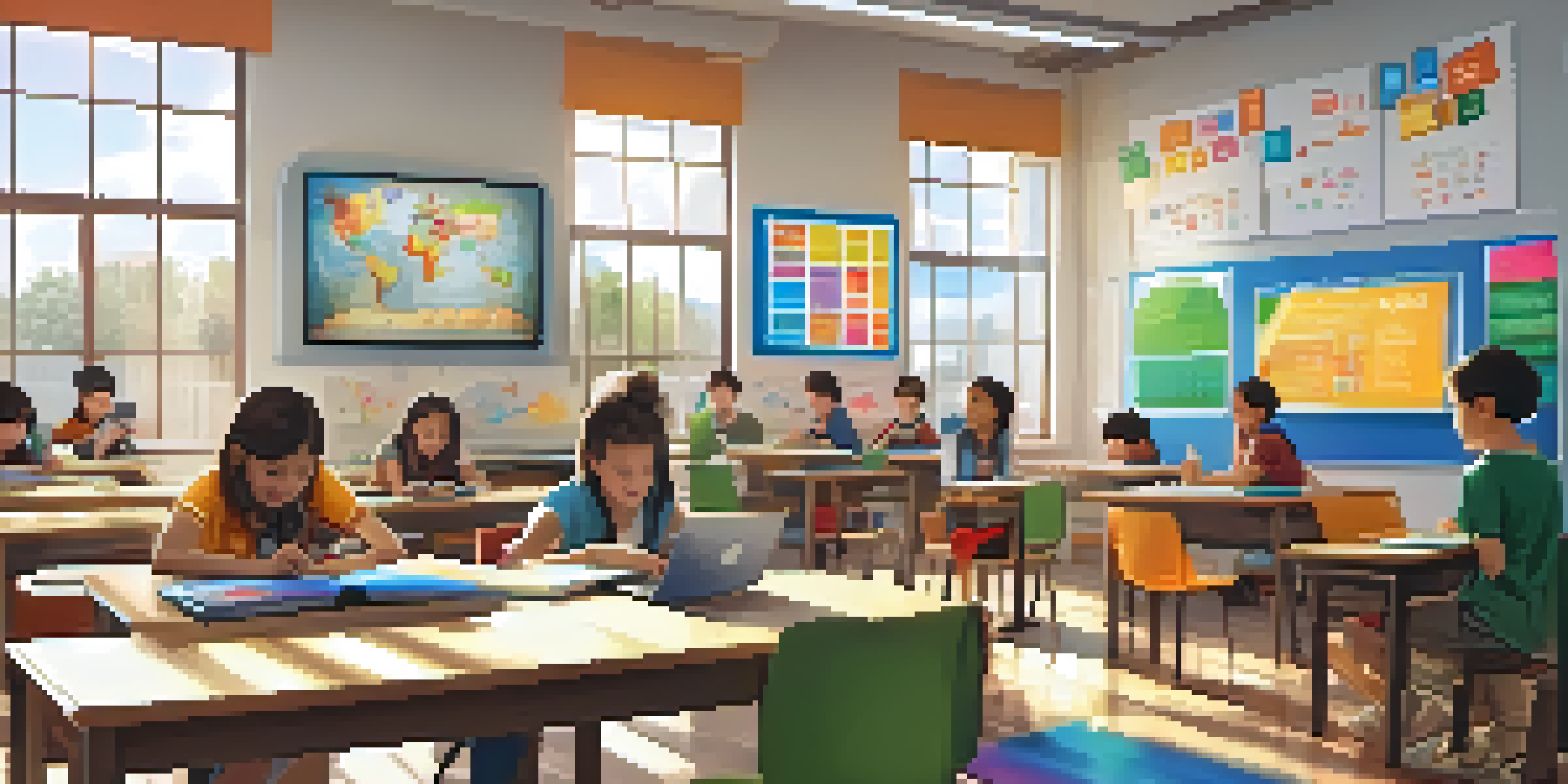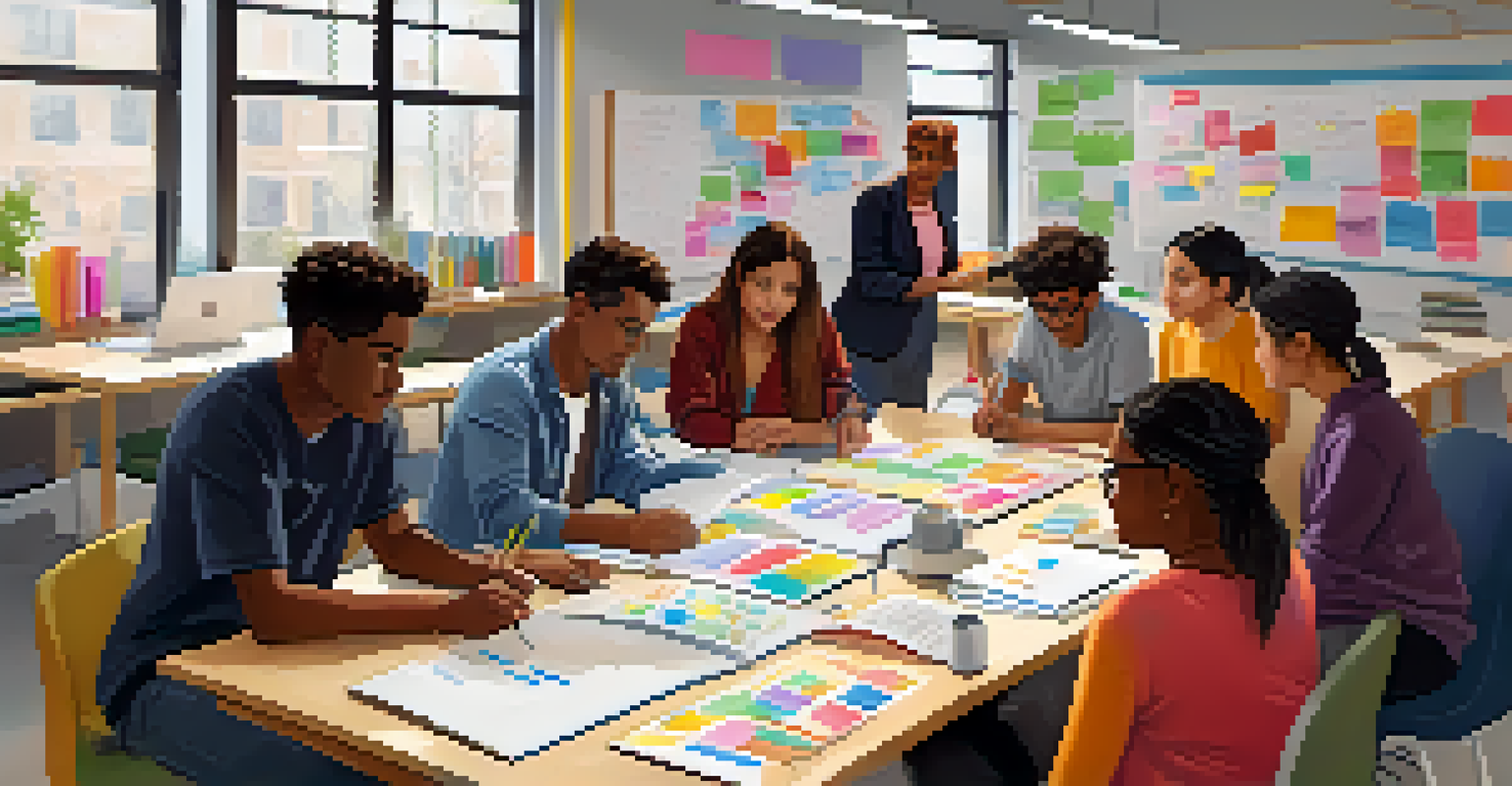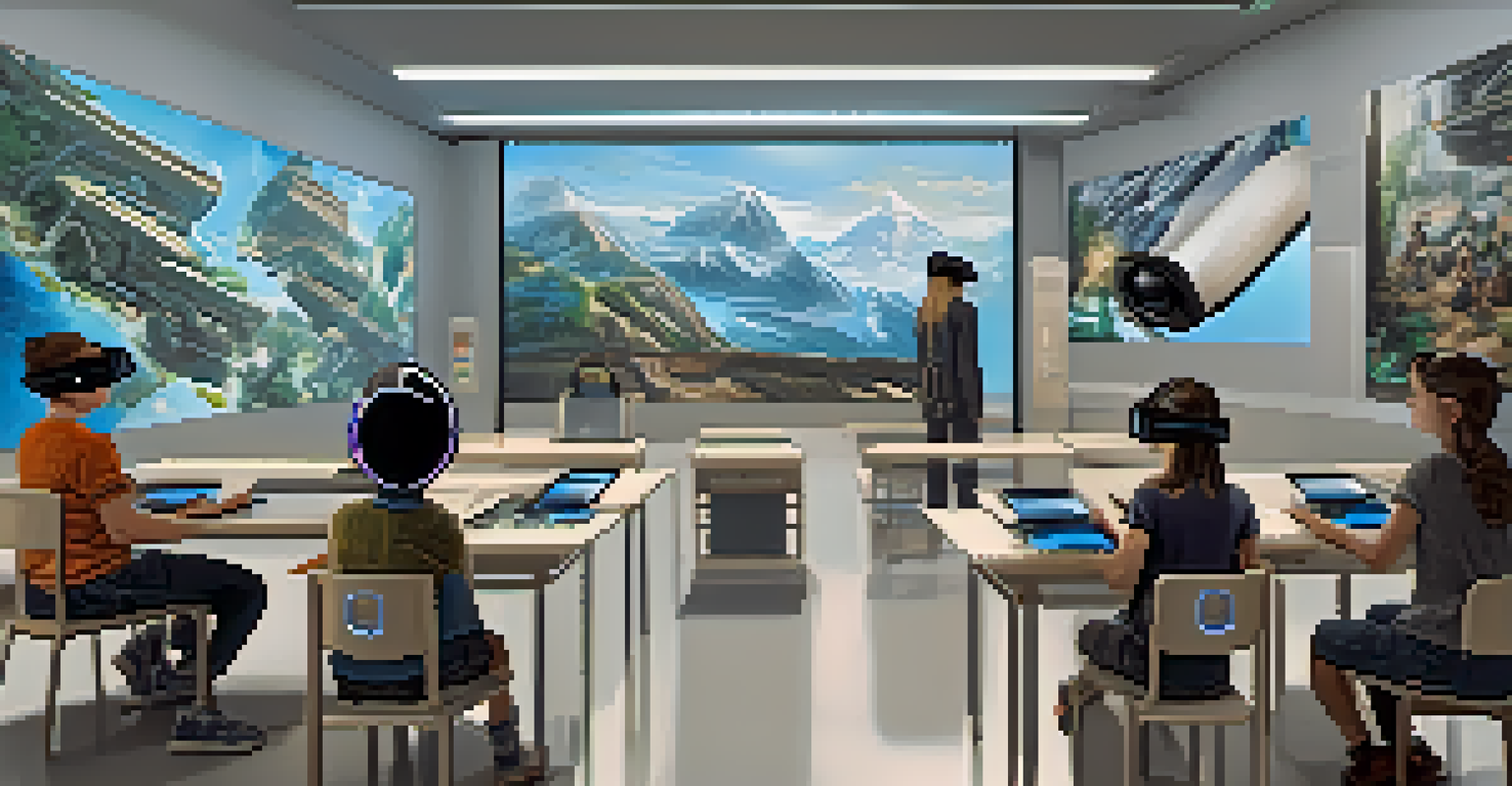The Role of Technology in Modern Education Systems

The Shift from Traditional to Digital Learning Environments
Over the past few decades, education has witnessed a significant transformation. Traditional classrooms, once dominated by chalkboards and textbooks, are now increasingly integrated with digital tools. This shift creates a more dynamic learning environment where students can engage with materials in varied formats, from videos to interactive simulations.
Education is the most powerful weapon which you can use to change the world.
Digital learning environments allow for personalized education, catering to individual student needs and learning paces. For instance, platforms like Khan Academy enable learners to progress through lessons at their own speed, ensuring they fully grasp concepts before moving on. This personalized approach not only boosts comprehension but also fosters a sense of independence in students.
Moreover, this transition has made education more accessible. Students from diverse backgrounds, including those in remote areas, can now access quality educational resources online, breaking down geographical barriers. With just an internet connection, a wealth of knowledge is available at their fingertips, leveling the playing field in education.
Enhancing Engagement Through Interactive Technology
Engagement is key to effective learning, and technology plays a crucial role in enhancing student interaction. Tools like gamification—where learning activities are turned into games—motivate students to participate actively. This approach taps into their natural love for play, making education feel less like a chore and more like an adventure.

For example, platforms such as Quizizz and Kahoot! allow educators to create fun quizzes that students can complete in real-time, fostering a lively classroom atmosphere. This not only reinforces learning but also encourages healthy competition among peers, making lessons memorable and enjoyable.
Digital Learning Enhances Engagement
Interactive technologies like gamification and real-time quizzes significantly boost student participation and make learning enjoyable.
Additionally, interactive technology can facilitate collaboration among students. Tools like Google Classroom and Microsoft Teams enable group projects and discussions, even if students are physically apart. This collaboration nurtures communication skills and teamwork, vital competencies in today's interconnected world.
Bridging the Gap with Online Learning Platforms
Online learning platforms have revolutionized access to education, particularly in recent years. Websites like Coursera and edX offer courses from top universities, allowing anyone with an internet connection to learn from esteemed educators. This democratization of knowledge makes higher education more attainable for a wider audience.
The great aim of education is not knowledge but action.
Moreover, these platforms often provide flexibility that traditional classrooms cannot match. Learners can choose when and where to study, accommodating different lifestyles and commitments. For instance, a working professional can engage in online courses during commute hours or evenings, making lifelong learning feasible.
However, this accessibility also highlights the importance of digital literacy. Students must possess the skills to navigate these platforms effectively and discern credible sources. As such, integrating digital literacy into curricula becomes essential, ensuring that all learners can thrive in an increasingly online world.
The Role of Artificial Intelligence in Personalized Learning
Artificial intelligence (AI) is transforming education by providing tailored learning experiences. AI-driven systems can analyze student performance data and identify areas where they struggle, allowing for customized lesson plans. This targeted approach helps educators address individual needs more efficiently.
For instance, platforms like DreamBox Learning use AI to adapt math lessons in real-time based on student responses. If a student finds a particular concept challenging, the system can offer additional practice or alternative explanations, ensuring they grasp the material before progressing.
AI Personalizes Education Experience
Artificial intelligence tailors learning to individual needs, providing customized lesson plans and support for students.
Furthermore, AI can assist teachers in administrative tasks, freeing up time for more meaningful interactions with students. By automating grading or scheduling, educators can focus on fostering relationships and providing support, ultimately enhancing the overall educational experience.
The Importance of Digital Literacy in the Classroom
As technology permeates education, digital literacy has become a fundamental skill for students. Understanding how to navigate digital tools and platforms is crucial for academic success. Schools must prioritize teaching these skills to equip students for their future careers, which will likely demand proficiency in technology.
Digital literacy extends beyond basic computer skills; it encompasses critical thinking and information evaluation. Students need to learn how to discern reliable sources from misinformation, especially in an age dominated by social media. Teaching these skills empowers students to become informed citizens who can engage thoughtfully with the world around them.
Moreover, integrating digital literacy into the curriculum can enhance student engagement. When students understand how to use technology effectively, they are more likely to participate actively in their learning. This connection between technology and engagement underscores the importance of preparing students for a tech-driven future.
Challenges and Limitations of Technology in Education
While technology offers numerous benefits in education, it also presents challenges that cannot be overlooked. One major concern is the digital divide; not all students have equal access to technology. Disparities in internet connectivity and device availability can hinder learning opportunities for some, perpetuating existing inequalities.
Additionally, over-reliance on technology can lead to issues such as reduced face-to-face interaction. Students may miss out on developing essential social skills if they primarily communicate through screens. Educators must find a balance between leveraging technology and promoting in-person collaboration and communication.
Digital Literacy is Essential for Success
As technology becomes integral to education, equipping students with digital literacy skills is crucial for their academic and future career success.
Furthermore, the rapid pace of technological change can be overwhelming for teachers. Continuous professional development is necessary to ensure that educators are equipped to use new tools effectively. Without proper training, the potential of technology in enhancing education may remain untapped, underscoring the need for ongoing support.
Future Trends: Embracing Innovation in Education
As we look ahead, the integration of emerging technologies in education is set to expand further. Virtual reality (VR) and augmented reality (AR) are on the horizon, promising immersive learning experiences that can transport students to different places and times. Imagine a history lesson where students can walk through ancient civilizations or explore the human body in 3D!
Additionally, the focus on lifelong learning will likely drive the evolution of educational technology. As careers increasingly demand adaptability, continuous learning platforms will become essential. This trend suggests that education will shift from a one-time event to an ongoing journey, supported by technology.

Ultimately, embracing innovation in education involves collaboration among educators, technologists, and policymakers. By working together, we can create systems that leverage technology to enhance learning outcomes and prepare students for the future. The possibilities are vast, and the future of education is bright.